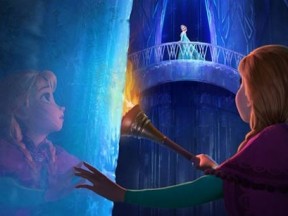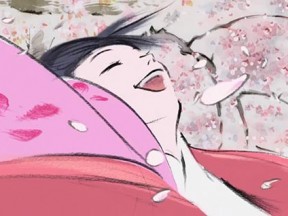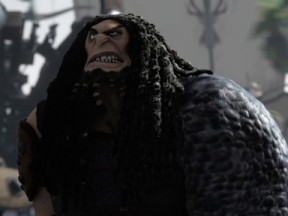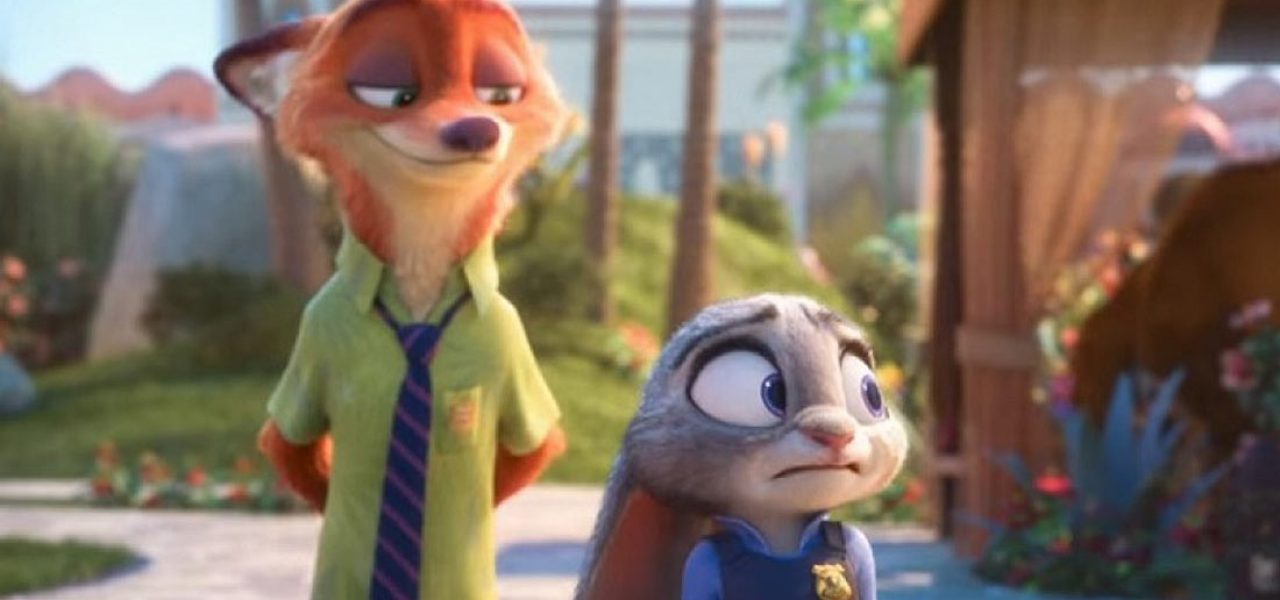
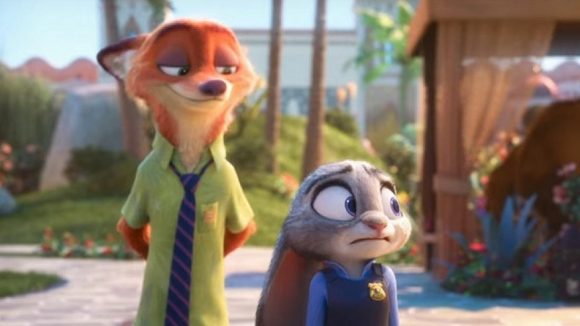
‘Zootopia’ Acting Analysis: An Anthropomorphic And Metaphoric Muddle
Critically analyzing a Disney animated movie is like analyzing the American flag: you must handle it carefully and remember to salute after you are finished.
Their movies are not designed for close critical scrutiny, and the studio’s legions of fans can be easily offended. To many, Disney is as iconic as apple pie or Sunday church. So what if the pie is a little lumpy, or the sermon is banal? It really does not matter because, well, because it is a Disney movie.
Disney’s Oscar frontrunner, Zootopia, directed by Byron Howard and Rich Moore, grossed over $1 billion globally. In the following analysis, I do not take corporate achievement into consideration, and I ask you, my reader, not to either. My standard is that animation is an art form.
The entire cast of characters in Zootopia is comprised of anthropomorphized animals, a device that generally works well in animated films, particularly for the Walt Disney Company. The challenge here, however, is that the creators of this movie want to instruct us about the perils of racism in contemporary society, so the animal characters are metaphoric in addition to being anthropomorphized – and these two devices make awkward bedmates. To work anthropomorphically, they must act like humans; to work metaphorically, the animals must be depicted as they really are in nature.
The Big Idea in the story is that predatory characters have been able to rise above their natural predatory behavior in order to live in peaceful harmony with their natural prey. Anthropomorphically, this works well; metaphorically, it is a heavy lift because humans have the will to adapt this way, but lower animal species do not. In order to fully appreciate what the creative team is attempting to do, the audience must perform aesthetic triple-axels when it comes to the willing suspension of disbelief. (I wrote on this topic six years ago here.)

For starters, let’s look at the most popular sequence in Zootopia, the one mentioned most often by reviewers. The scene features sloth characters in the Department of Motor Vehicles, moving at 33 1⁄3 rpm in a 78 rpm world. It works like gangbusters because the metaphor holds up. Sloths are the world’s slowest moving animals and, as we all know too well, human DMV employees seem also to be the slowest moving animals on earth.
Acting-wise, Judy Hopps, the hero rabbit of the story, is trying to run a license plate number, and she is in a hurry. Her objective is to learn who owns the car, and her action is to ask the DMV clerk to check it for her. She has conflict with her situation because the clerk is a sloth.
As acting teacher Constantine Stanislavsky pointed out, every character has a “rhythm,” and Judy’s rhythm is quick because she is a rabbit. That works metaphorically. The sloths have the rhythm of a grandfather clock by contrast, which also works metaphorically.
The fox Nick Wilde has his own objective: to get Judy to give him the carrot-recorder tape recording of his admission of income tax evasion. To achieve his objective, he is purposely guiding Judy into frustrating and embarrassing situations, hoping she will give up her pursuit.
Nick has two kinds of conflict: (1) conflict with another character – Judy – and also (2) conflict with the situation because Judy is so resilient. This works well metaphorically because foxes are famously cunning animals. Unfortunately for Nick, however, no matter how hard he tries to frustrate and discourage her, Judy still prevails with her bunny rabbit optimism. The DMV clerk, meanwhile, does not have any conflict at all, except that the customers are always asking him to work faster. He is running the license plate at his natural sloth speed.
The sequence works so well because it reflects an episodic truth of our human daily life: If you must do business with the DMV, plan on taking a number and being there for a long time.
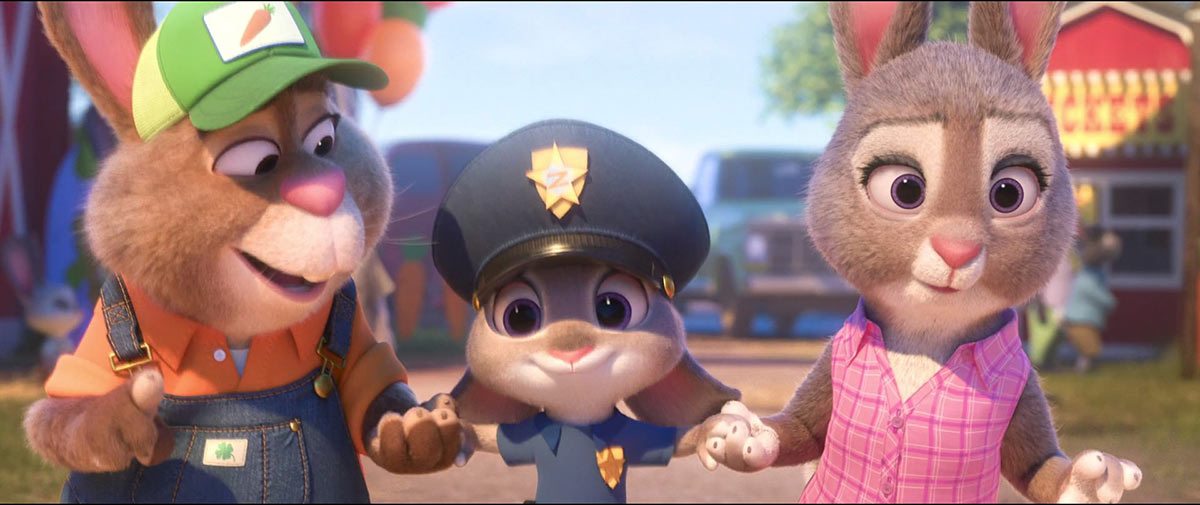
Now, let’s look at a sequence that fails both metaphorically and in performance. As the film opens, Judy—still a young bunny—is performing in a school play for an audience of adoring parents. We learn through her performance that she aspires to be a police officer when she grows up. So far, so good.
Her parents, Bonnie and Stu Hopps, want to discourage that aspiration because rabbits have never been police officers and because being a police officer is a potentially dangerous profession. And so, after the school play ends, Bonnie and Stu give parental advice to their daughter while the three of them stroll through the fairgrounds of the Carrot Days Festival.
The performance problem is that the dialogue does not fit the characters’ attitude. Here is a transcript of the dialogue. Read it over, and I will walk you through the acting challenge it presents.
STU: Judy, did you ever wonder how your mom and me got to be so darned happy?
JUDY: Yep!
STU: Well, we gave up on our dreams, and we settled. Right, Bonnie?
BONNIE: Oh, yes. Stu. We settled …
STU: That’s the beauty of complacency. If you don’t try anything new, you’ll never fail.
JUDY: I like trying, actually.
BONNIE: What your father means, hon, is that it is going to be difficult – impossible, even — for you to become a police officer.
STU: Right. There’s never been a bunny cop…
BONNIE: No…
STU: Bunnies don’t do this…
BONNIE: Never…
STU: Never…
JUDY: Oh. Then I guess I’ll have to be the first one! Because I am going to make the world a better place!
Acting is behaving believably in pretend circumstances, for a theatrical purpose. When Shakespeare, in Hamlet (act 3, scene 2) advised that the actor should “hold the mirror up to nature,” that is what he was talking about.
The audience members should recognize the behavior of the on-stage characters as credible. It doesn’t have to be logical, but it should be credible in terms of the pretend circumstances of the play itself. At the most basic level, the actor’s job is to justify a character’s actions and words, as presented in the script. The actor does not have the option of re-writing the script.
In Hollywood’s animated feature films – and I presume this is the case with Zootopia – the animator must physically justify on screen a character’s scripted actions and pre-recorded dialogue. The animator is locked into the interpretation of a sequence by whatever was produced during dialogue recording.
The challenge in this particular sequence is that Stu’s scripted lines are banal, and his delivery of them is not credible. He is explicitly advocating that his daughter give up her dreams and live a life of complacency. Does this strike you as responsible and intelligent parenting, even for an anthropomorphized rabbit?
If this was a live-action sequence, what do you think Robert Downey, Jr. would do with the dialogue? The intention of the lines is clear. Stu is counseling his daughter against aspiring to excitement and good deeds in life. Robert Downey – or any other actor worth his salt – would think that surely Stu can’t mean that literally!
If Mr. Downey was delivering the lines, he would likely attempt a tongue-in-cheek interpretation, telegraphing to Judy and Bonnie that he is exaggerating a point humorously in order to illustrate a larger and more urgent life-lesson about being safe, happy and prosperous. But that is not the way the sequence was interpreted in the recording session for Zootopia.
In the final track, Stu sounds utterly sincere and humorless, adopting the kind of attitude he might choose if instructing Judy to be sure and stop for red lights or to brush her teeth before bed.
In other words, the directors opted for a bland, generic, upbeat line reading. Why? You will have to ask them, but I am guessing that bland, generic and upbeat is simply the default tone in a typical Disney movie featuring anthropomorphic animals.
It is a perplexing interpretation because, in all other respects, Stu seems to be an intelligent and normal man/rabbit. But the line reading is what it is. If the animator detected the falsity of the reading, she would be unable to do anything about it because she must animate what she is given. Simply put, the sequence utterly defies artistic excellence, and it is no fault of the animator’s. It makes one wonder where the story supervisor was during all of this. The scene could have been fixed at the writing stage; and if it managed to reach the recording studio, it really should have been fixed there. Acting-wise, the sequence needs more conflict-obstacle.

Let’s fast-forward to the sequence in which Police Chief Bogo asks Judy to hand over her badge, to resign from the Zootopia Police Department. (56:21 – 57:39 on the DVD, if you want to look it up.) I like this sequence a lot because there is complex acting in it, extremely well done. Also, anthropomorphizing and metaphor are working in sync. The fox is sly; the rabbit is sensitive, and the water buffalo is dominant.
The sequence is rich with unspoken subtext and, after all, acting has very little to do with words. Bogo’s objective is to force Judy off the police force, and his action in pursuit of that objective is to ask her to hand over her badge. Until this moment, Judy’s primary objective has been to crack the missing-mammals case, but the rule of acting is that you pursue an objective until you either achieve it – or another objective takes its place.
When Bogo asks for her badge, Judy’s objective changes to keeping her job. This sequence is satisfying in another aspect because it is a negotiation. All theatrically valid scenes contain negotiations, but the stakes are not always as high as they are here. Literally, Judy’s career is on the negotiating table.
She is on the verge of admitting defeat when Nick is triggered into a transformational moment. Until now, his primary objective has been to un-tangle himself from Judy altogether, so he can return to his life of petty crime. However, during the time he has been with her while searching for Emmitt Otterton, Nick’s values have evolved.
When he realizes that Judy is on the verge of resigning from the police force, Nick’s objective abruptly changes: Save her job! He cleverly achieves that objective. He has conflict with the situation. Each of the three characters has a transition in this scene, and all of the changes are colored by status transactions. Bogo has high status because of his rank. But Nick boldly holds the stage equally with Bogo, just in time to save Judy’s job. This is an excellent scene, well written and powerfully performed. The metaphor holds.
As entertaining and satisfying as Zootopia may be on a scene-by-scene basis, the movie ultimately fails because it insists on having it both ways simultaneously – anthropomorphic and metaphoric.
In order to sell the message that humans can – and arguably should – choose peaceful cohabitation over animal savagery, the cast of anthropomorphized animals must necessarily abandon their animal nature, thereby destroying the metaphor. The best thing to be said about the movie is at least Disney tried to do something creatively relevant to the challenges we are facing in today’s real world. And for that … I salute the flag.

